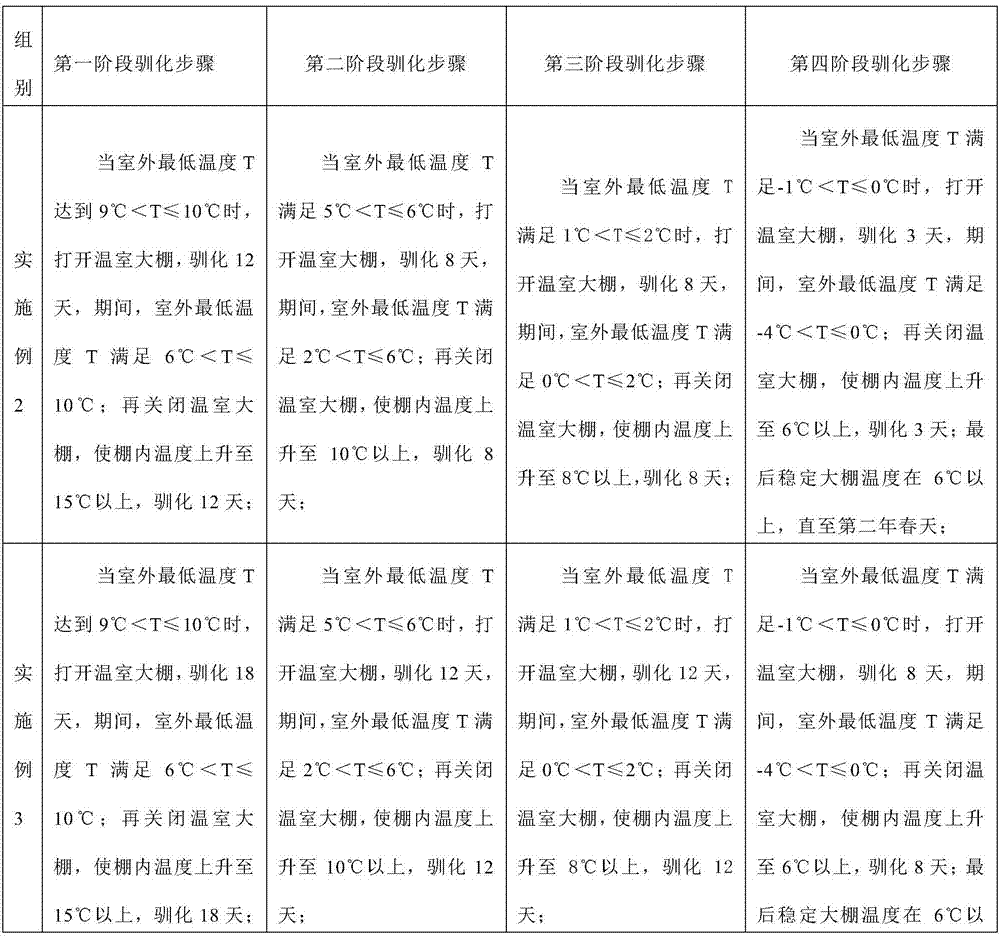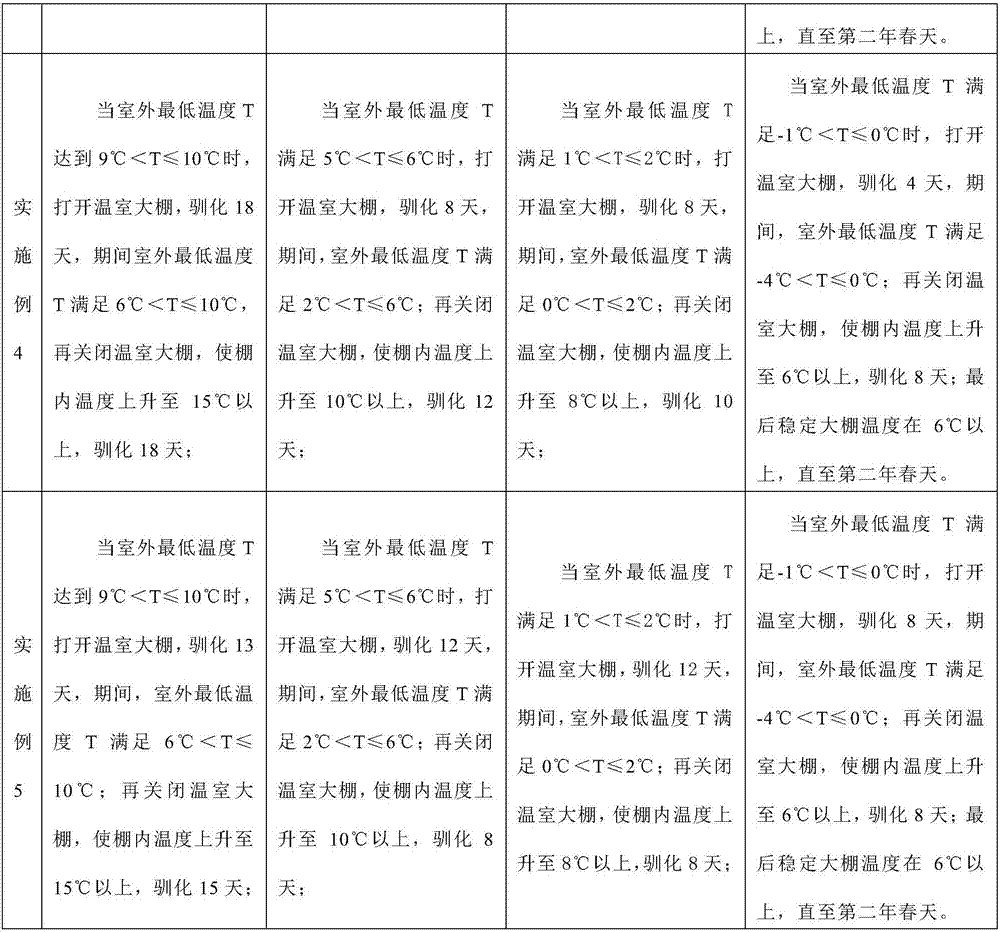Mangrove plant northward movement and domestication method
A technology of mangrove plants and low-temperature domestication, which is applied to the domestication and cultivation of plants, the northward domestication of mangrove plants, and the northward transplantation of mangrove plants candelan, which can solve the problems of not considering the influence of other factors and links on seedlings
- Summary
- Abstract
- Description
- Claims
- Application Information
AI Technical Summary
Problems solved by technology
Method used
Image
Examples
Embodiment 1
[0044] (1) Seed selection: Candela seeds come from Fujian, and the collection time is from April to May every year. The first batch of precocious hypocotyls or eight or nine mature hypocotyls are collected, which have strong cold resistance and adaptability. Soak the seeds in local seawater for 1 hour and send them to the planting site as soon as possible (within 4 days). During the transportation of seedlings (that is, hypocotyls of candelabra), the tops of the seedlings are placed in the air-permeable bamboo baskets, and the bottom layer is placed with straw, which cannot be piled up, and ventilation is ensured.
[0045] (2) Transplanting: 1-2 days after the spring tide of the current month, and select cloudy days after low tide for transplanting; hypocotyls are soaked with 0.1wt%-0.2wt% potassium permanganate solution for 12h before planting, in order to sterilize. Concrete implanting method is: be that 2-3cm wooden stick is punched hole on tidal flat with diameter, the hyp...
Embodiment 2-5
[0062] Embodiment 2-5, compared with embodiment 1 except the temperature acclimation condition in step (3) domestication is different, other conditions are all the same; Specifically, embodiment 2-5 please see table 2, T represents outdoor in table 2 Please refer to Table 3 for the minimum temperature and acclimatization test results.
[0063] Temperature acclimation condition in table 2 embodiment 2-5
[0064]
[0065]
[0066] Acclimatization test result in table 3 embodiment 2-5
[0067]
Embodiment 6
[0069] In this example, except that the specific steps of alternating high and low temperature domestication and cultivation of candela hypocotyls transplanted in the planting place are different from those in Example 1, other steps are the same as in Example 1. The specific steps of high and low temperature alternate domestication and cultivation in this embodiment as follows:
[0070] The first stage of acclimation step: when the minimum outdoor temperature reaches 6°C, roll up the roller blinds for low-temperature acclimation for 10 days. During this period, the minimum outdoor temperature T should be higher than 2°C; Above 10°C, domesticate for 10 days;
[0071] The second stage of acclimation step: when the minimum outdoor temperature reaches 2°C, roll up the roller blinds for low-temperature acclimation for 10 days. During this period, the minimum outdoor temperature T should be higher than 0°C; Above 8°C, domesticate for 10 days;
[0072] The third stage of acclimation ...
PUM
 Login to View More
Login to View More Abstract
Description
Claims
Application Information
 Login to View More
Login to View More - R&D
- Intellectual Property
- Life Sciences
- Materials
- Tech Scout
- Unparalleled Data Quality
- Higher Quality Content
- 60% Fewer Hallucinations
Browse by: Latest US Patents, China's latest patents, Technical Efficacy Thesaurus, Application Domain, Technology Topic, Popular Technical Reports.
© 2025 PatSnap. All rights reserved.Legal|Privacy policy|Modern Slavery Act Transparency Statement|Sitemap|About US| Contact US: help@patsnap.com



